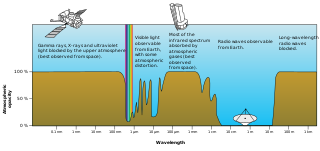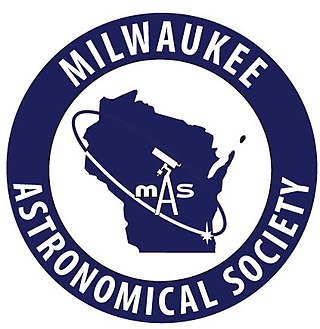
An astronomer is a scientist in the field of astronomy who focuses their studies on a specific question or field outside the scope of Earth. They observe astronomical objects such as stars, planets, moons, comets and galaxies – in either observational or theoretical astronomy. Examples of topics or fields astronomers study include planetary science, solar astronomy, the origin or evolution of stars, or the formation of galaxies. A related but distinct subject is physical cosmology, which studies the Universe as a whole.

Amateur astronomy is a hobby where participants enjoy observing or imaging celestial objects in the sky using the unaided eye, binoculars, or telescopes. Even though scientific research may not be their primary goal, some amateur astronomers make contributions in doing citizen science, such as by monitoring variable stars, double stars, sunspots, or occultations of stars by the Moon or asteroids, or by discovering transient astronomical events, such as comets, galactic novae or supernovae in other galaxies.

Astronomy is a natural science that studies celestial objects and the phenomena that occur in the cosmos. It uses mathematics, physics, and chemistry in order to explain their origin and their overall evolution. Objects of interest include planets, moons, stars, nebulae, galaxies, meteoroids, asteroids, and comets. Relevant phenomena include supernova explosions, gamma ray bursts, quasars, blazars, pulsars, and cosmic microwave background radiation. More generally, astronomy studies everything that originates beyond Earth's atmosphere. Cosmology is a branch of astronomy that studies the universe as a whole.

The Astronomical Society of the Pacific (ASP) is an American scientific and educational organization, founded in San Francisco on February 7, 1889, immediately following the solar eclipse of January 1, 1889. Its name derives from its origins on the Pacific Coast, but today it has members all over the country and the world. It has the legal status of a nonprofit organization.

The Inter-University Centre for Astronomy and Astrophysics (IUCAA) is an autonomous institution set up by the University Grants Commission of India to promote nucleation and growth of active groups in astronomy and astrophysics in Indian universities. IUCAA is located in the University of Pune campus next to the National Centre for Radio Astrophysics, which operates the Giant Metrewave Radio Telescope. IUCAA has a campus designed by Indian architect Charles Correa.
The American Meteor Society, Ltd. (AMS) is a non-profit scientific organization established to encourage and support the research activities of both amateur and professional astronomers who are interested in the field of meteor astronomy. Its affiliates observe, monitor, collect data on, study, and report on meteors, meteor showers, meteoric fireballs, and related meteoric phenomena.

The National Centre for Radio Astrophysics is a research institution in India in the field of radio astronomy is located in the Pune University Campus, is part of the Tata Institute of Fundamental Research, Mumbai, India. NCRA has an active research program in many areas of Astronomy and Astrophysics, which includes studies of the Sun, Interplanetary scintillations, pulsars, the Interstellar medium, Active galaxies and cosmology and particularly in the specialized field of Radio Astronomy and Radio instrumentation. NCRA also provides exciting opportunities and challenges in engineering fields such as analog and digital electronics, signal processing, antenna design, telecommunication and software development.

Visible-light astronomy encompasses a wide variety of astronomical observation via telescopes that are sensitive in the range of visible light. Visible-light astronomy is part of optical astronomy, and differs from astronomies based on invisible types of light in the electromagnetic radiation spectrum, such as radio waves, infrared waves, ultraviolet waves, X-ray waves and gamma-ray waves. Visible light ranges from 380 to 750 nanometers in wavelength.
Jitendra Jatashankar Rawal is an Indian astrophysicist and scientific educator, recognized for his work in the popularisation of science.
The Royal Astronomical Society of Canada (RASC) is a national, non-profit, charitable organization devoted to the advancement of astronomy and related sciences. At present, there are 30 local branches of the Society, called Centres, in towns and cities across the country from St. John's, Newfoundland, to Victoria, British Columbia, and as far north as Whitehorse, Yukon. There are about 5100 members from coast to coast to coast, and internationally. The membership is composed primarily of amateur astronomers and also includes numerous professional astronomers and astronomy educators. The RASC is the Canadian equivalent of the British Astronomical Association.

The International Year of Astronomy (IYA2009) was a year-long celebration of astronomy that took place in 2009 to coincide with the 400th anniversary of the first recorded astronomical observations with a telescope by Galileo Galilei and the publication of Johannes Kepler's Astronomia nova in the 17th century. The Year was declared by the 62nd General Assembly of the United Nations. A global scheme, laid out by the International Astronomical Union (IAU), was also endorsed by UNESCO, the UN body responsible for educational, scientific, and cultural matters.
The Escambia Amateur Astronomers Association (EAAA) is an amateur astronomy club in Northwest Florida.
Khagol Mandal is an organisation of amateur astronomers in Mumbai, India. Established in 1985 by handful of astronomy enthusiasts, the organisation has grown into a membership of 1000+. The organisation was founded and is still based in Mumbai, Maharashtra, India.
Stephen J. Edberg is a scientist at the Jet Propulsion Laboratory. He is perhaps best known for creating collaborative efforts between amateur and professional astronomers. A professional astronomer since 1970, Edberg still considers himself to be an active amateur astronomer as well and is an active astronomical observer, photographer, and telescope maker. He presently serves as staff astronomer for the Solar System Exploration website posted by NASA Headquarters and staff scientist for Earth science communication and for Exoplanet Exploration communication.
The Confederation of Indian Amateur Astronomers (CIAA) is a national level organisation of amateur astronomers in India that convenes a national meeting of members every year, and coordinates the activities of amateur astronomers throughout the country. It was established in 1993 and registered in 1994, following an Inter-University Centre for Astronomy and Astrophysics meeting in 1991.

The Israeli Astronomical Association (IAA) is an Israeli nonprofit organization. Its purpose is to deepen and distribute the awareness for the field of astronomy among the Israeli public.
Khagol Vishwa (KV) is an organization for amateur astronomers working in Maharashtra, India. It was established on 17 November 1999. The main activity of KV is to conduct observations of astronomical events, like meteor showers, eclipses, occultation, variable stars and generate scientific data for amateur research. Along with scientific studies, KV is also active in science popularization. Some of the major activities conducted by KV are public star gazing programs, sky at your doorstep, certificate course in amateur astronomy, and science exhibition.

The Astronomical Society of Victoria (ASV) is an amateur astronomy club in the state of Victoria, Australia. It was founded in 1922, making it one of the oldest such clubs in the country, and with some 1500 members it claims to be one of the largest amateur astronomy organisations in the southern hemisphere. Membership is open to all with an interest in astronomy, and the society caters for people with a wide range of ages, backgrounds, abilities and interests.

The Milwaukee Astronomical Society (MAS) is a 501(c)(3) tax-exempt organization serving amateur astronomers in the greater Milwaukee area since 1932, making it one of the oldest continuously running astronomy clubs in the nation. The MAS operates an observatory, one of the largest amateur club observatories in the world. The current membership is 270.










